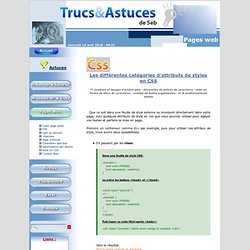

20 Tools to Make the Life of a Web Developer Easier. Developing a well-rounded aesthetically pleasing website can be a daunting task even for the most seasoned web developer.

You must identify current trends and standards and determine ways to incorporate them into your designs. Luckily, there are many free tools which are available that can help you speed up your efforts and work in a more efficient manner. Below are 20 tools which are sure to benefit all developers. Typetester Typetester is an online application for comparing how different fonts and font attributes will appear on a given set of text. pForm Create a php form in seconds with this free and easy to use tool. ColourLovers An international site created for color lovers. Firebug Firebug integrates with Firefox to put a wealth of web development tools at your fingertips while you browse. HTML Entity Character Lookup Need to know how to display the trademark symbol on one of your pages, this tool if just for you. 960 Grid System Em Calculator Browser Shots Icon Finder WhatTheFont Pingdom.
10 HTML Tag Crimes You Really Shouldn’t Commit. You better watch out, because the HTML police are about.

They scour your code and pick out the most unspeakable crimes against HTML markup. This handy list of ten HTML tag crimes sheds some light on some of the most common coding mistakes and helps provide an alternate solution. Tips include writing valid markup, making semantic choices, avoiding deprecated tags and more! Crime 1: Placing Block Elements Inside Inline Elements HTML elements can either be displayed in two ways, Block or Inline.
Crime 2: Not Including an ALT Attribute on Images The ALT attribute is a required element on all images displayed on a web page. Crime 3: Not Using Lists When Necessary The handy UL (and OL) tags have a bunch of uses and are extremely versatile for the display of all kinds of page items. Crime 4: Using <b> and <i> for Bolding and Italicizing Crime 5: Using Too Many Line Breaks Crime 6: Using The Wrong Strikethrough Tags Crime 7: Using Inline Styling Crime 8: Adding or Removing Borders in HTML. Les différentes catégories d'attributs de styles en CSS. Les différentes catégories d'attributs de styles en CSS Couleurs et images d'arrière plan - décoration de polices de caractères - mise en forme de blocs de caractères - modèle de boîtes englobantes - et le positionnement absolu Que ce soit dans une feuille de style externe ou incorporé directement dans votre page, voici quelques attributs de style en css que vous pourrez utiliser pour égayer vos textes et parfaire la mise en page.

Prenons un conteneur comme div par exemple, puis pour utiliser ces attribus de style, nous avons deux possibilitées: Couleurs et images d'arrière plan Décoration de polices de caractères Les principaux éléments créant des blocs sont : l'élément div ; les titres h1, h2, h3, h4, h5, h6 ; le paragraphe p ; Les listes et éléments de liste ul, ol, li, dl, dd ; Le bloc de citation blockquote ; Le texte pré-formaté pre ; L'adresse address. Mise en forme de blocs de caractères Gestion des boîtes englobantes Positionnement relatif et absolu [Retour Haut de la page]